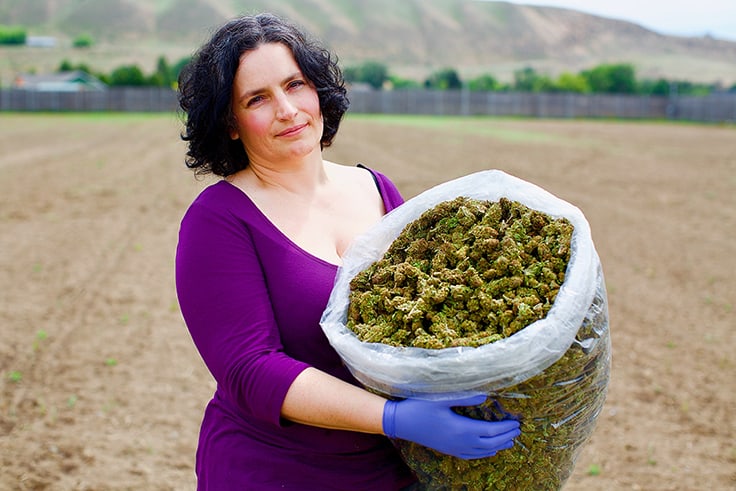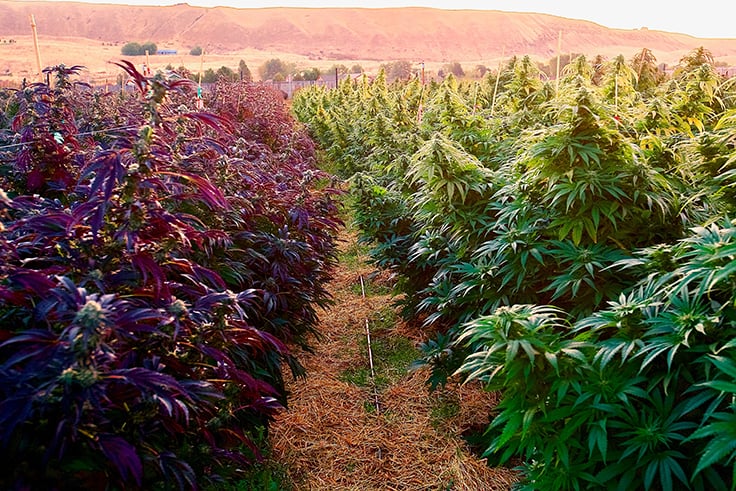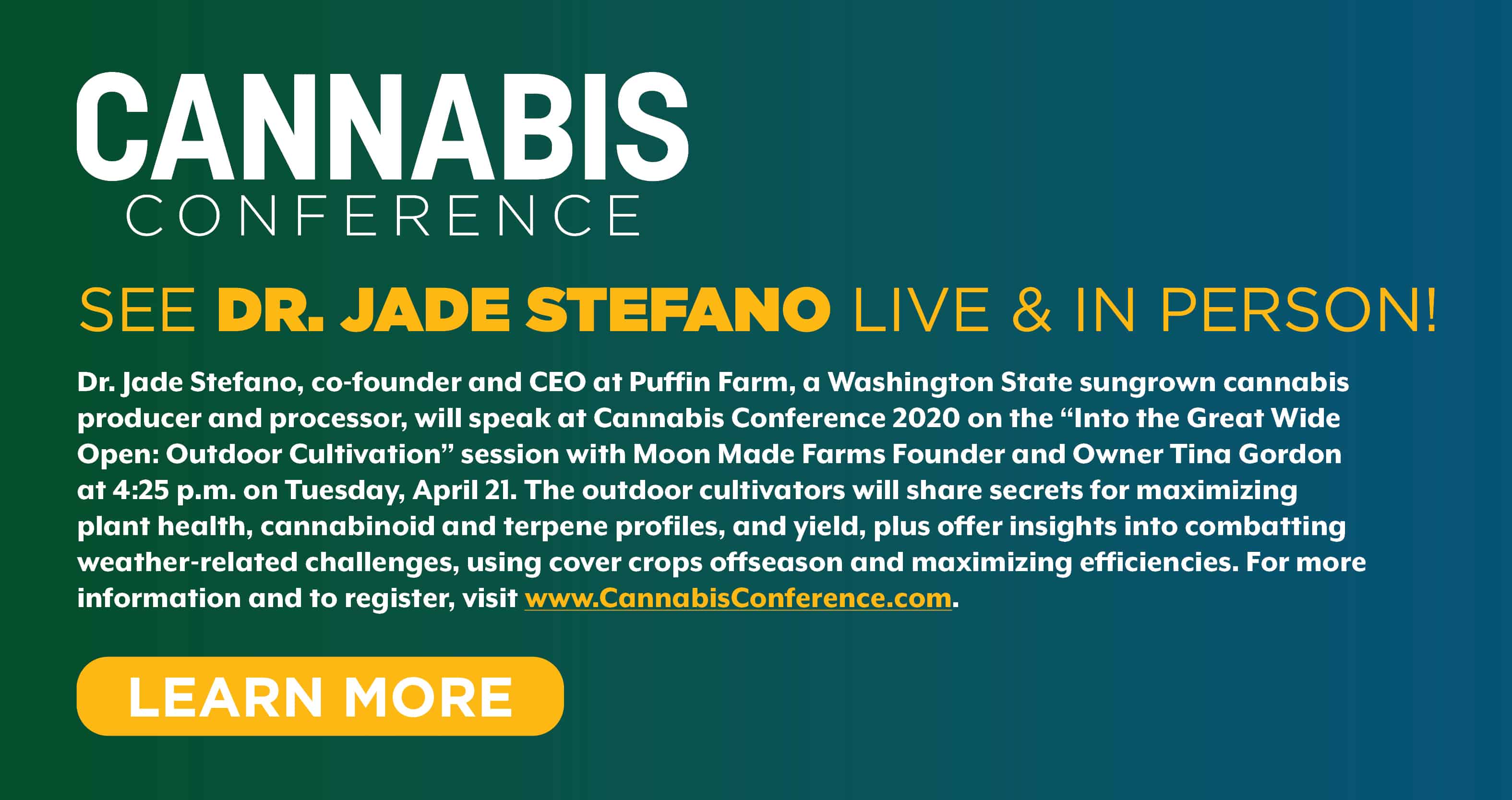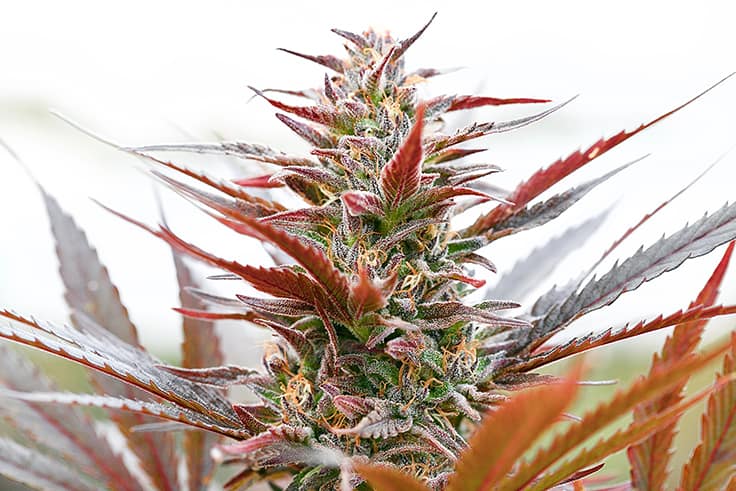Maximizing Success in Outdoor Cannabis Cultivation: Q&A with Puffin Farm’s Jade Stefano
Marijuana Industry News January 9, 2020 MJ Shareholders
Growing cannabis outdoors has its advantages, such as the use of sunlight and the natural development of robust terpene profiles as plants respond to stressors such as weather and insects. However, those looking to launch or optimize a sungrown cannabis operation should implement regular maintenance and best practices to ensure maximum quality and yield.
Here, Jade Stefano, co-founder and CEO of Puffin Farm, a Washington-based sungrown cannabis producer and processor, shares advice on maximizing plant health and cannabinoid and terpene profiles, as well as lessons learned from the farm’s first hemp crop.

Photos by David Goodman
Cannabis Business Times: What are some best practices to maximize plant health outdoors?
Jade Stefano: Best practices start with cleanliness—having clean stock, a clean environment and quality inputs and soil. If you don’t have clean stock, good soil and a healthy environment, nothing is going to work out. That’s the No. 1 thing.
That involves making sure, if you’re using clones, that the mothers are kept very healthy over the winter. We grow from clones, and you have these mothers that you have to maintain. You have to keep them going for years, so keeping it all really healthy is super important. When we take the clones, those clones are healthy, and they grow into healthy plants. We have regular maintenance schedules with the plants for cloning them, and they get sprayed with organic essential oils and various things like that, just to make sure they don’t become infected with powdery mildew over the winter. They’re very prone to that. So, stay on schedule. Make sure any beneficial insects that are used are released on schedule. Don’t wait for things to get out of control, but keep things going and healthy with maintenance and regular schedules.
[Test] your soil. We grow outdoors in native soil, so each year, we test that and make sure that the soil doesn’t become deficient in any nutrients and make sure it’s not too high in anything, as well. That can happen when fertilizers or amendments are over-applied. Soil testing is super important and should never be overlooked. You can waste tons of money putting on the wrong thing, not putting on the right thing, and soil testing is a really cheap and easy way to figure out what you need and how much of it you need to apply. If you have healthy soil, then the plants are going to be healthy.
Also, be willing to cull plants that are not doing so well. Sometimes, you have to kill plants. You don’t want to have to fight. If something has taken hold that is not good, you need to just start fresh sometimes. Using quality inputs and organic practices can really help with plant health, as well.

Puffin Farm grows its cannabis in native soil, and tests the soil each year to determine which nutrients are deficient or in excess.
CBT: What are some ways to optimize cannabinoid and terpene profiles in an outdoor operation?
JS: Being outdoors, you’re going to be optimizing terpene profiles anyway, just being outside with nature and wind and predation and natural forces. That automatically is going to increase terpene profiles and possibly cannabinoid profiles, depending on how long you can keep the plants outside. That is an advantage of outdoor cultivation—you get these much more complex and robust terpene profiles with higher content because terpenes are a natural response from the plant to stressors such as insects, pressure, and even wind. By being outside, you’re stimulating that plant to produce more of these compounds to protect itself from natural forces.
One thing you can do to help that along is not over-fertilizing. When you give the plants too much nitrogen, you’ll get some more growth and you can actually probably increase yields that way, but you’re going to lose quality and terpene content. That’s because when the plant is being fed at the maximal rate, it’s giving it more than it needs. It’s getting lots and lots of nitrogen, it grows and it gets really big, but that plant is not being stressed in a way to trigger it to produce terpenes and cannabinoids at the same rate. So, we’re very careful not to use nitrogen too much or too late in the season. In an outdoor environment, you typically want to stop any additional nitrogen application, if you use it, in early to mid-August at the latest. If you keep going after that, you’re risking delaying the onset of flowering and also having a lower terpene content.

CBT: How can outdoor growers maximize yield, then, without sacrificing quality?
JS: That’s where it’s a balancing act. You can increase your yield by giving more water, more fertilizer, but your quality is going to go down, and then you’ll get a lower price for it. So, for yield, the most important thing we’ve found is strain selection—finding varieties that yield well just based on their genetic makeup.
We don’t want to get a bigger yield to sacrifice quality. For us, having a really robust and fragrant terpene profile is much more important than yield, and we even grow some low-yielding strains because they’re so good. We sacrifice yield for terpene content and flavor pretty extensively. For our market, we have a connoisseur market, and that’s who we cater to—people who want really unique, terpene-rich profiles. Those customers are willing to pay a bit more, so we’re able to not worry about yield as much as others are.
We have some strains that are amazing yielders, and it’s all their genetic makeup. There’s not much we can do to increase yield without causing a decline in quality, so we don’t worry about it too much. We’re trying to move toward growing more of our high-yielding strains over time. Some of those happen to be our biggest sellers, as well. That’s something to do, is to think about what you’re growing and plan accordingly. Make sure the bulk of your production is strains that you know yield well.
CBT: You recently harvested your first hemp crop. How is hemp cultivation different from cannabis cultivation, and what were some lessons learned in transitioning to this new crop?
JS: There is really zero difference because they are the same exact plant, [but] because of the THC limit of 0.3%, you have to be very selective about the genetics that you choose because it could easily go over that. That’s to become even stricter this coming season, where they’re going to be testing the hemp two weeks prior to harvest. Last year, it was 30 days. So, at two weeks, some of the things that would have passed at 30 days pre-harvest will no longer pass the 0.3% THC level testing.
When you’re growing from seed, which most hemp farmers are doing, and we experimented from seed last year, you just don’t really know. Every plant is different within that seed batch. Until you’ve grown that same seed crop many years, you don’t really know how high it could go with THC. It’s a huge risk. I think this coming season, there’s going to be a lot of failure in the THC testing. There was a fair amount this year around the country, but I think that’s going to be even worse next year. When growing from seed, people need to be extremely careful. That’s what we’ve learned.
We’re not going to grow much hemp seed next season. We’re going to grow from clones, which is a whole hassle for a variety of reasons. I would much rather grow from seed, but the risk for us of ending up with a crop that could have too high of THC is just too stressful, too much risk, and we’re not in a place yet where we have seeds that we trust. When we buy seed, it’s incredibly expensive. It’s $1.00 per seed. Those seeds are usually feminized, and a good portion of the time, they have hermaphroditic plants, and males, even though they’re feminized, there’s still a pretty good ratio of plants that have male flowers, and those will cause damage to your crop if you have a THC cannabis crop on the same farm. It’s extremely dangerous because you can end up seeding your regular cannabis crop. You could see huge losses from that because it’s a much more valuable crop. You don’t want to put that crop at risk if you’re doing both and [growing] hemp from seed, unless you’re growing very small quantities. You have to be able to scout those plants and find males on a daily basis. You have to check every single plant for probably six weeks. So, it’s a lot of work. We are going to be moving toward clones, ones that we know won’t go over the 0.3%. That’s our biggest lesson.

Puffin Farm cultivates varieties with robust and fragrant terpene profiles, often prioritizing terpene content over yield.
CBT: What do you hope attendees will bring back to their business from your session at Cannabis Conference 2020?
JS: Hopefully people will get a good handle on things to avoid. There are a lot of mistakes. We made mistakes along the way, so hopefully we can provide some information on what we’ve learned to keep people from making similar mistakes.
As far as best practices, hopefully people will have a good starting point for some basic things they can do that are cheap and easy and save you a ton of money and headache in the end. There are little things that one can be proactive about and really save a lot of hassle and money down the road.
Editor’s Note: This interview has been edited for style, length and clarity.
MJ Shareholders
MJShareholders.com is the largest dedicated financial network and leading corporate communications firm serving the legal cannabis industry. Our network aims to connect public marijuana companies with these focused cannabis audiences across the US and Canada that are critical for growth: Short and long term cannabis investors Active funding sources Mainstream media Business leaders Cannabis consumers








